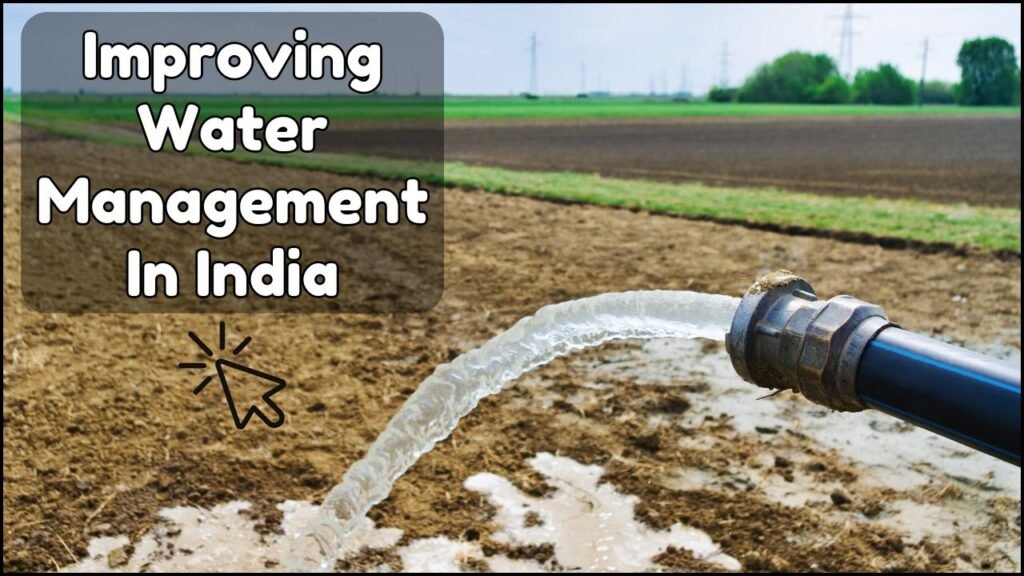
We need to improve water management plans in India. We should adopt the traditional approach of rainwater harvesting and use the rainwater for external use. These practices will reduce the consumption of groundwater. Govt can build storage tanks that store water during the rainfall season and that water should be supplied to the whole village or town. We need the safe disposal of wastewater. The awareness regarding conservation will motivate the public to efficiently use fresh water. The govt should build low-cost water management systems.
Why Do We Need Water Management?
The total population of India accounts for 18% of the world’s population. The water availability is 4% in India as compared to the population of India. India is a water-stressed country and we need to have water management policies. The yearly consumption of groundwater by India is 230 cubic kilometers. This fact shows that India tops the list of the world’s largest users of groundwater.
Out of the total water used by India 90% of groundwater is for agricultural use. Out of total irrigation land, 60% of land uses the groundwater for the crops. If we continuously extract the groundwater and do not take any steps for replenishment, we will land in a very difficult situation and a time can come when no water is left inside the earth.
India has seen climate change and changes in the pattern of rainfall. We need to properly utilize the rainfall water because if we do not utilize the rainfall water, it gets wasted into the sea. The village needed the safe disposal of the wastewater. If we do not opt for safe disposal, the wastewater will continue to contaminate the fresh water. People can suffer from water contamination problems.
Water Resource Augmentation
We strictly needed the water rescue augmentation. We need to take steps the replenish depleted underground water, rainwater harvesting, and augmenting groundwater. These initiatives will improve the availability and quality of groundwater. The people will feel secure in terms of water availability.
The govt needed to collaborate with the communities to revive the historical water bodies. The govt can construct recharge structures that can store the monsoon water. The rainfall water can be used as surface storage or for the augmentation of groundwater.
Rooftop Rainwater Harvesting
When we talk about the water management program, the first concept comes is rooftop rainwater. In our houses, we need to store the rainwater from the rooftop. Apart from homes, schools, institutes, hospitals, and offices must store rainwater. Rainwater can be stored in tanks and can be used later on.
We can build some mechanism that can purify the rainwater for human use. The rainwater can be well treated so that all solid particles are removed from the water, removing the risk of biological contamination, and other contaminants are also removed from the stored rainwater. And the surplus rainwater can be revived back to the ground.
Wash
The time has come when we need to change the wash behavior in communities. The wash behavior includes the disposal of wastewater, the water which is waste can be used for other purposes and can be revived into the grounds. For this, the requirement is to check the quality of waste water like soap quantity in the water. The people can be aware of the efficient use of water. The govt can provide the WASH training to the households.
Safe Drinking Water
We need to improve access to safe drinking water. Many diseases are there that are waterborne. We can opt for the methodologies that promote safe drinking water with proper treatment.
JalKalp water filter
One of the filters that can be used to purify water is Jalkalp Water Filter. It is a sustainable stainless steel bio-sand filter. This filter does not depend on recurring maintenance or electric power. JalKalp has been proven effective measure to stop parasites, worms, microbes, and E.coli. This water filter also treats the manganese, and iron, arsenic contamination.
MatiKalp water filter
Another approach to filter water is the MatiKalp filter. The MatiKalp filter is a low-cost filter that can be produced in villages too. This filter can filter the pathogens, turbidity, iron, and manganese residing in water.
Soil Conservation
When we talk about the soil conservation, this concept comes along with the water conservation. Water used in a controlled way directly controls soil conservation. To prevent soil conservation, structures can be built that can hold the soil like walls, planting trees on a large scale, etc. These will reduce the runoff of the top layer of soil. Better ways to manage flood water will directly affect soil erosion. For soil conservation, it is required to maintain the soil moisture levels.
Water-Conscious Communities
The people who are aware of the water scarcity can be motivated easily to properly use the water. Many communities are working towards the proper use of water. They understand the importance of groundwater and they take safe water for drinking purposes. These communities have women, children, men, and old age people who are promoting the best use of water. More and more awareness is the key to invoking the people towards the efficient use of water. Govt should implement the policies for water management.
FAQ
What is India doing to improve water quality?
Indian govt has implemented various policies for groundwater quality. There are many groundwater conservation efforts like rainwater usage, changing patterns of irrigation, etc
What are the technologies used in water management in India?
There are many innovations in water management such as:
- Smart meters
- Sensors
- Supervisory Control
- Data Acquisition
- Pipe Network Management System
- Geographic Information Systems